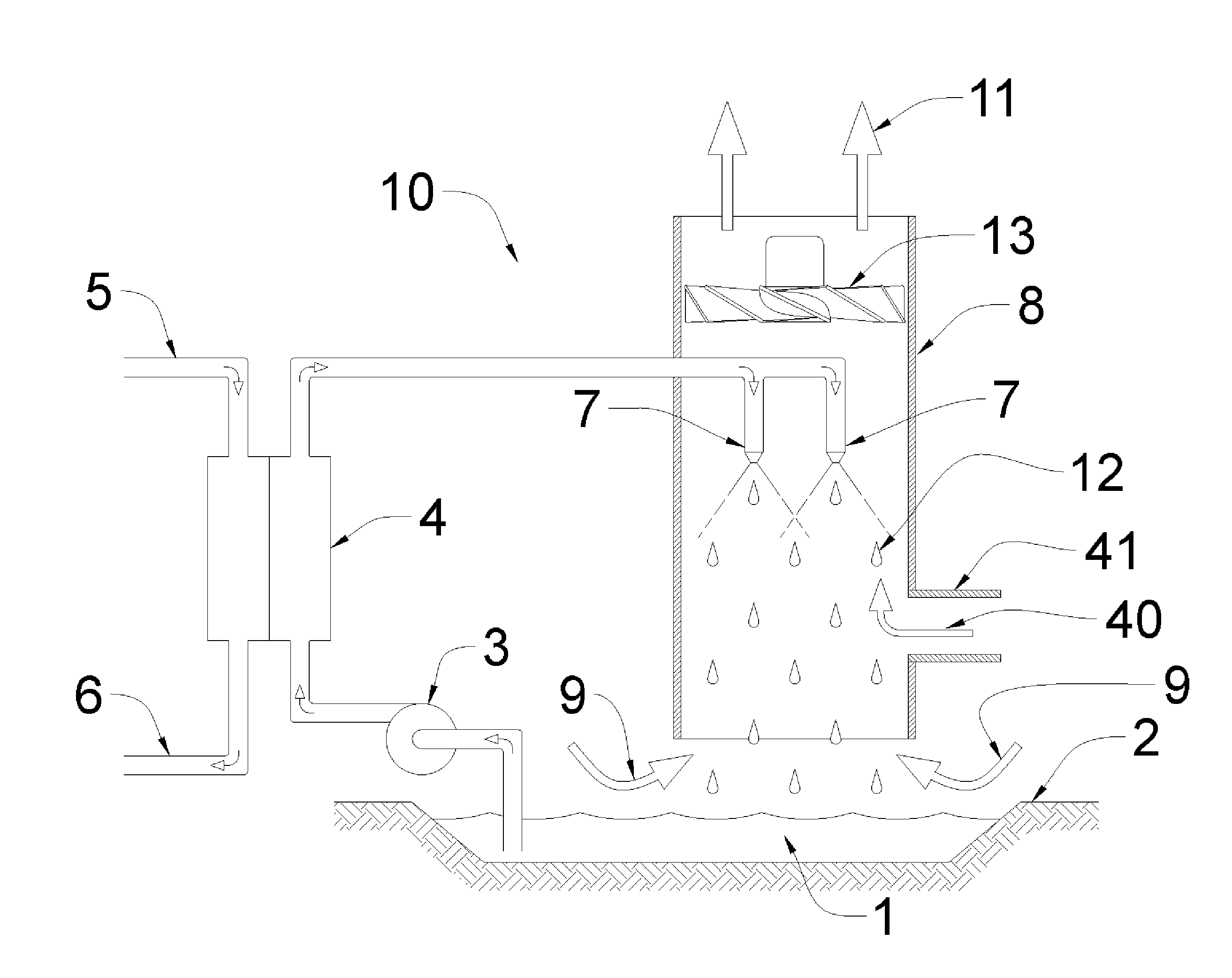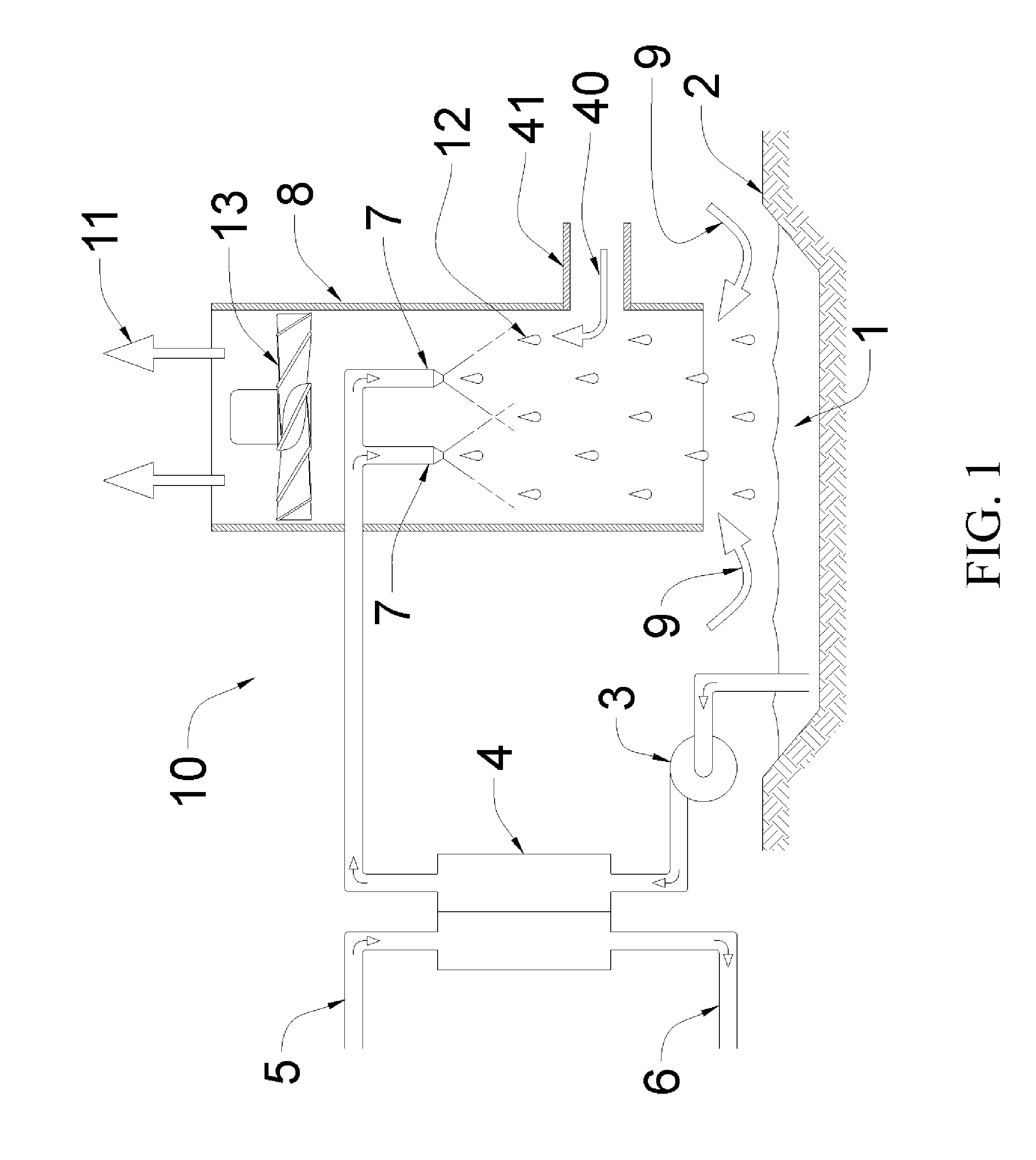Heat dissipation systems with hygroscopic working fluid
a working fluid and heat dissipation system technology, applied in the direction of heating types, lighting and heating apparatus, domestic cooling apparatus, etc., can solve the problems of poor air cooling process efficiency, few opportunities for cooling in the future, inferior cooling of air, etc., and achieve the effect of reducing water consumption
- Summary
- Abstract
- Description
- Claims
- Application Information
AI Technical Summary
Benefits of technology
Problems solved by technology
Method used
Image
Examples
Embodiment Construction
[0029]The heat dissipation systems described herein are an improvement to the state of the art in desiccant-based (hygroscopic) fluid cooling systems by incorporating means to regulate the amount of sensible heat transfer, e.g., heat exchanged having as its sole effect a change of temperature versus latent heat transfer, e.g., heat exchanged without change of temperature, taking place in heat dissipation system so that the desiccant-based hygroscopic fluid remains stable (hygroscopic desiccant in solution) to prevent crystallization of the desiccant from the desiccant-based hygroscopic fluid. In simple form, the heat dissipation system comprises at least one hygroscopic desiccant-to-air direct-contact heat exchanger for heat exchange having combined sensible and latent heat transfer, at least one sensible heat exchanger for heat exchange with a change of temperature of the heat exchange fluid used, and at least one desiccant (hygroscopic) fluid for use as the heat exchange fluid in ...
PUM
 Login to View More
Login to View More Abstract
Description
Claims
Application Information
 Login to View More
Login to View More - R&D
- Intellectual Property
- Life Sciences
- Materials
- Tech Scout
- Unparalleled Data Quality
- Higher Quality Content
- 60% Fewer Hallucinations
Browse by: Latest US Patents, China's latest patents, Technical Efficacy Thesaurus, Application Domain, Technology Topic, Popular Technical Reports.
© 2025 PatSnap. All rights reserved.Legal|Privacy policy|Modern Slavery Act Transparency Statement|Sitemap|About US| Contact US: help@patsnap.com



